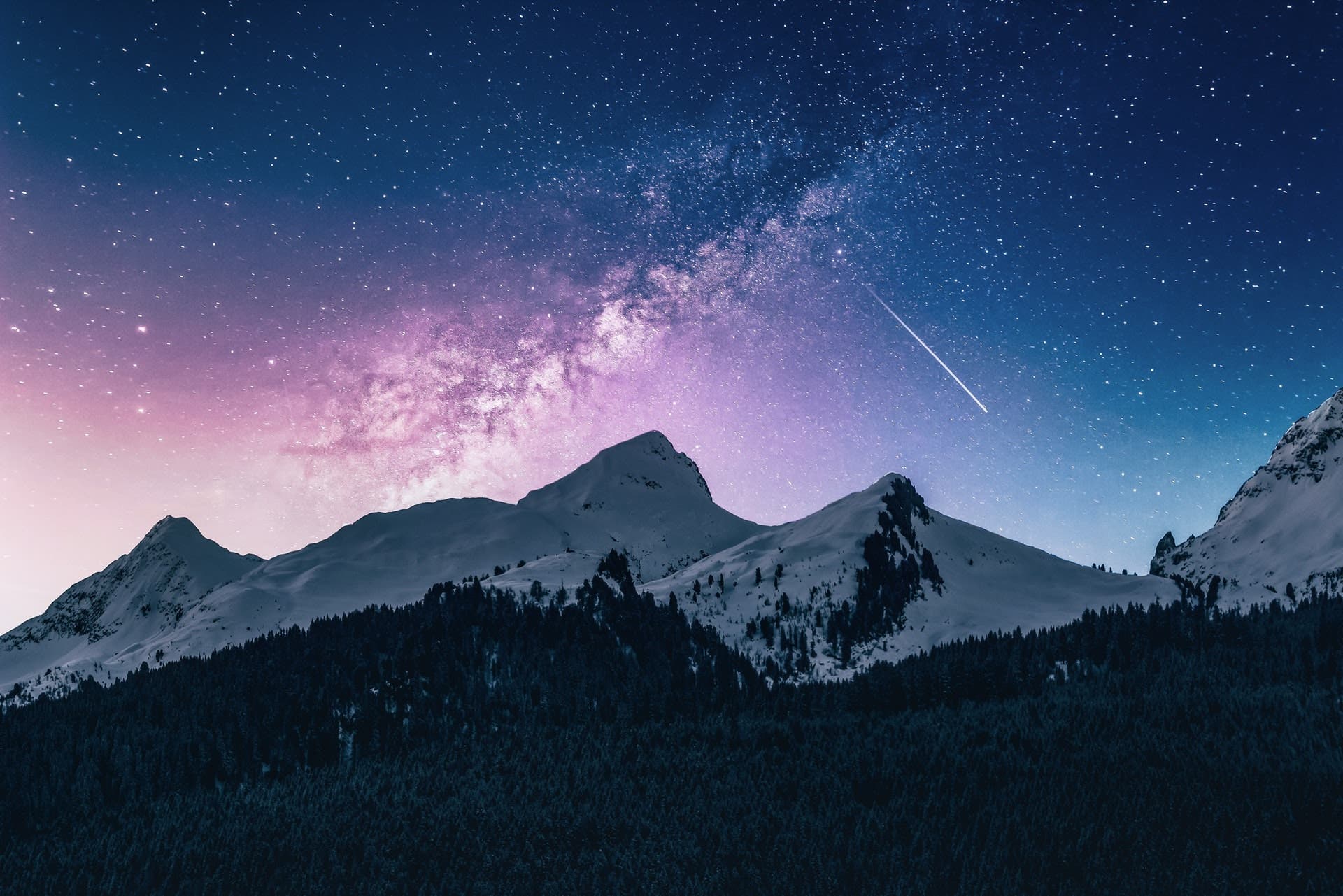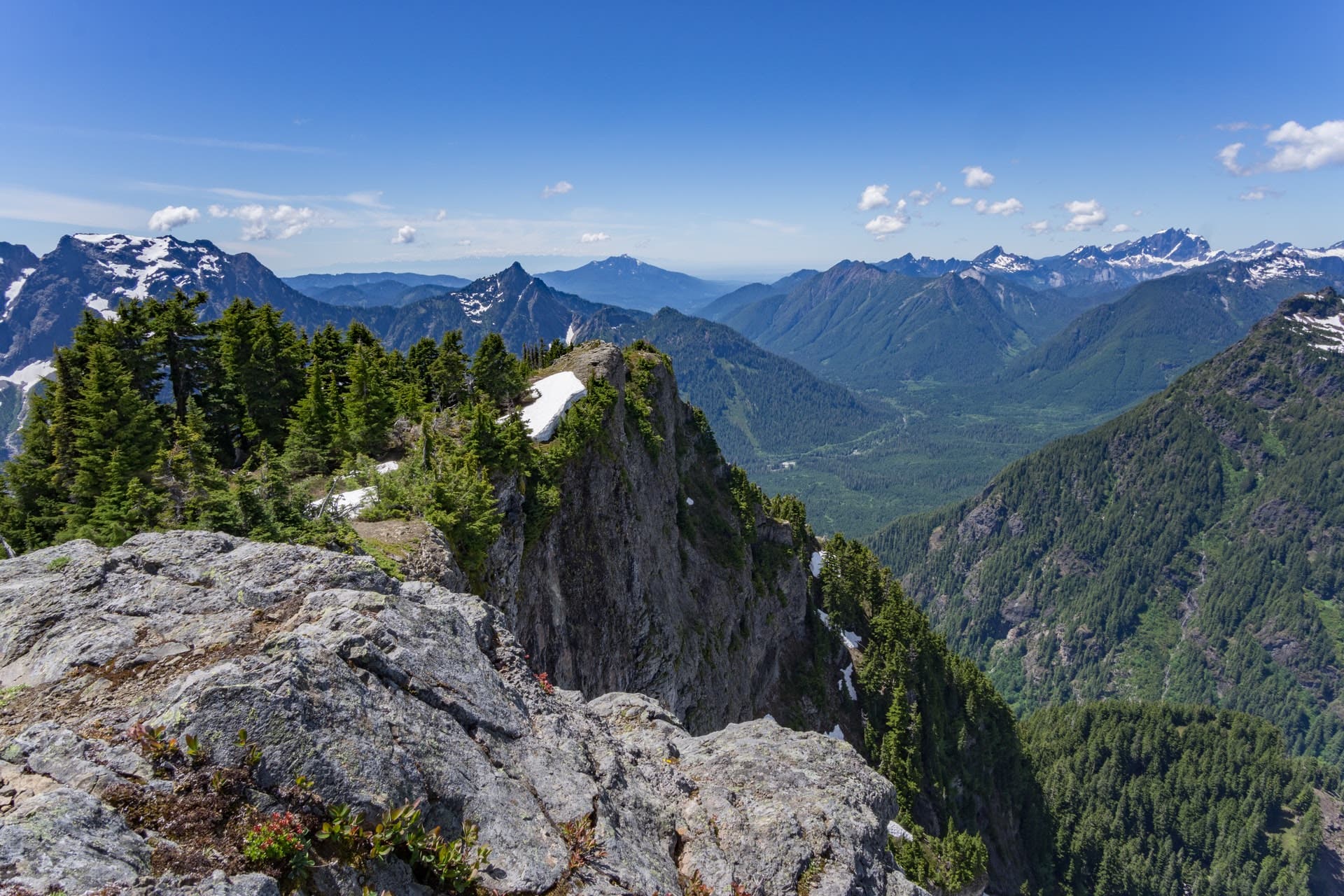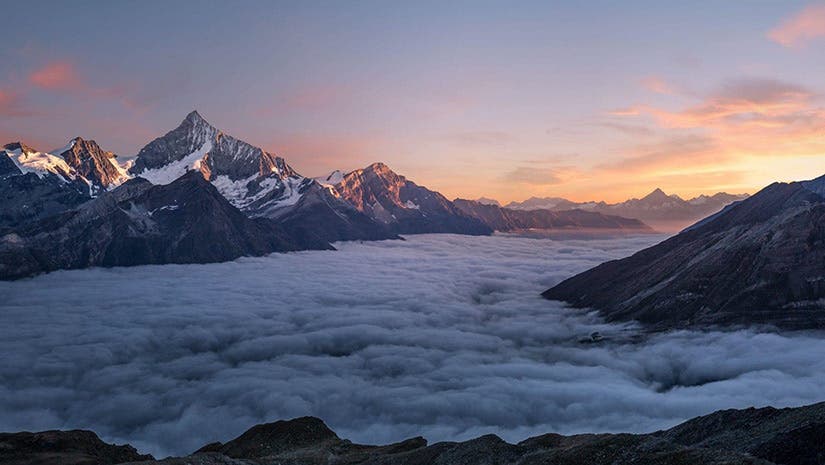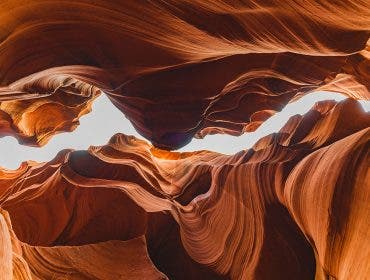Mountains are some of the most powerful, awe-inspiring features on our planet. Ansel Adams, one of the greatest landscape photographers in history, described mountains perfectly when he said, “No matter how sophisticated you may be, a large granite mountain cannot be denied — it speaks in silence to the very core of your being.”
Therefore, it makes sense why so many photographers are drawn to these magnificent formations. Not only is the experience of being in the mountains special, but you have the opportunity to capture some of the powerful, dynamic landscape photos you could ever take as a photographer.
However, that doesn’t mean mountain photography is easy. It’s probably one of the most challenging types of photography you can pursue, whether it’s related to the harsh alpine environments you can find yourself in, the difficulty of getting to the photo location, or the time and expertise required to pull off more complex compositions. Mountain photography is rewarding, but it is also difficult. So to help guide and prepare you for your next high alpine adventure or national park visit, here are 10 important mountain photography tips and tricks that can help improve your images and keep you safe.
Let’s get started.

1. Patience pays off
One of the biggest lessons that mountain photography will teach you is patience. You have to have patience because some of the best images take time. It can take hours for a cloud to move or days for a storm system to pass. You can spend multiple days waiting at camp for a singular moment, but those moments tend to be worth the wait.
Learn patience when practicing mountain photography. Be ready to wait, because the best moments happen after a storm or system passes.
2. Light takes longer
If you aren’t used to shooting in the mountains, light is much different than other landscapes. For example, you might see color in the clouds at sunrise or sunset, but it could take several hours to rise or fall over the mountain peaks for golden hour. Depending on other variables like clouds, weather, and the time of year (winter can take longer since the sun rises lower in the sky at a shallower angle), light can take hours to fully rise or set.
This is important to understand, especially when it comes to timing your photograph. For example, if you’re heading to a mountain location for evening golden hour and sunset, you have to plan on being at that location several hours before the typical golden hour time (an hour before sunset) or you could miss the light you want. This can depend on the size and height of the mountain peaks you are photographing, but regardless, light will always pass sooner on a mountain than at the horizon at sea level, and vice versa for sunrise.
3. Be ready to earn it
Mountains photography can be easy, but typically, the shots you want, the ones that separate and define your work, take maximum effort. Whether it’s a steep hike with several feet of elevation gain or a multi-day trek, all while carrying camera and camping gear, you will have to work for your shots.
However, that is sometimes the best part of mountain photography. The challenging journey can be just as rewarding as the final destination, leading to moments and shots unplanned and equally as beautiful and special. The journey can also teach patience, perseverance, and other principles important to photography and life in general.
So don’t shy away from the most difficult of shots, as they tend to lead to the most memorable mountain images.

4. Depth is crucial
One of the most crucial elements of mountain photography is depth. Whether it’s capturing multiple mountain layers or the details of a singular mountain face, you need maximum depth in your images to fully capture the majesty of the mountains.
Unless your shots demand shallow depth of field, it’s important to shoot at a narrower or smaller aperture for mountain photography. Typically, f/7.1 or greater is better for mountain photographers, depending on your lighting and shooting situations (shooting handheld vs a tripod). Greater depth leads to more dynamic, detailed shots. When shooting subjects like dynamic, detailed subjects like mountains, that is incredibly important to focus on. So set your settings around a smaller aperture and let your depth do the talking.
5. Tripods are your best friend
A sturdy, lightweight tripod is one of the most important pieces of gear you will carry while shooting in the mountains. It allows for narrow aperture settings when light is limited. It also provides the options for multiple composites or focus-stacking. Plus, it’s essential for shooting at slower shutter speeds, to capture movement in water or sky.
Tripods will expand your abilities and possibilities in the mountains and you should never leave the trailhead without one.
6. Go long
Typically, when people begin landscape photography, they are told the go-to lens is a wide angle lens, and don’t get me wrong, wide angle lenses are fantastic for mountain landscapes.
However, packing a long, telephoto lens will provide equal, if not greater opportunities for mountain photography. A long lens that provides a focal length between 100-500mm allows you to expand past what your human eye can see, and capture layers and details that are truly breathtaking. A long lens could capture a wisp of cloud or fog on a small section of a mountain, or the first light of alpenglow as the sun rises on the mountains.
Details like this are only captured when packing a telephoto lens, so go long for a change.

7. Contrast is everything
When it comes to mountain photography, contrast is everything. Whether it’s capturing the rich contrast of a bright blue sky with the deep greens of the timberline, or the needed color separation for timeless, black and white prints, you need to capture contrast in your mountain images.
A useful tool to capture maximum contrast is a circular polarizer filter or CP filter. If you’re shooting opposite away from direct sunlight, a quick twist of a CP filter will provide control over the amount of contrast and color you want in your images. CP filters can also help with controlling glare and reflections, which is also important in mountain photography.
A CP filter might be one of the smallest camera accessories in your bag, but it provides one of the biggest impacts on your mountain images. It allows for greater contrast and color, which can take your mountain photography to the next level.
8. Creating emotion in your images
The mountains are powerful and have a powerful effect on many people. They can stir emotions and create memories that are impactful and hard to forget.
When setting out to create mountain photography, it’s important to remember to capture that emotion in your images. Whether that’s capturing the first or last light of the day on the mountains, photographing certain seasonal elements like wildflowers or fall foliage, or including a human subject in your image for scale and added emotion, try to make the viewer “feel” something. A powerful visual image can awaken other senses and create the powerful emotion you are looking for. This can bode well for your images, whether they’re for commercial, editorial, or gallery use.

9. Simple can be better
As we’ve discussed, mountain ranges are complex formations. While it’s wonderful shooting images with layers and complexity, it’s just as powerful to focus on simple, minimalist compositions. Think of rows of evergreens reflecting in an alpine lake or a small piece of the mountain peeking through a layer of cloud. Focusing on simplicity can sometimes create the most profound, powerful mountain images.
10. Always respect the mountains
Finally, it’s always important to respect the mountains every time you go out to shoot. The mountains are incredibly beautiful, but also incredibly dangerous. From deadly wildlife to fast-forming, powerful weather systems can produce thunder and lightning storms. They can also deliver wind, hail, and snow, even in the summer months, so you need to be prepared for anything.
It’s highly recommended to travel in good weather, especially above treeline, and to never hike or trek alone. While it’s understandable wanting to get away to have time to yourself, that can lead to a severe consequence. Even something seemingly small like a twisted ankle can be deadly if you are far from cellular service, medical attention, or immediate help.
Mountain photography can be some of the most exciting, rewarding photography you can take part in, but it should only be pursued with the right experience, gear, and respect for the powerful, mountain subjects you will be photographing.





